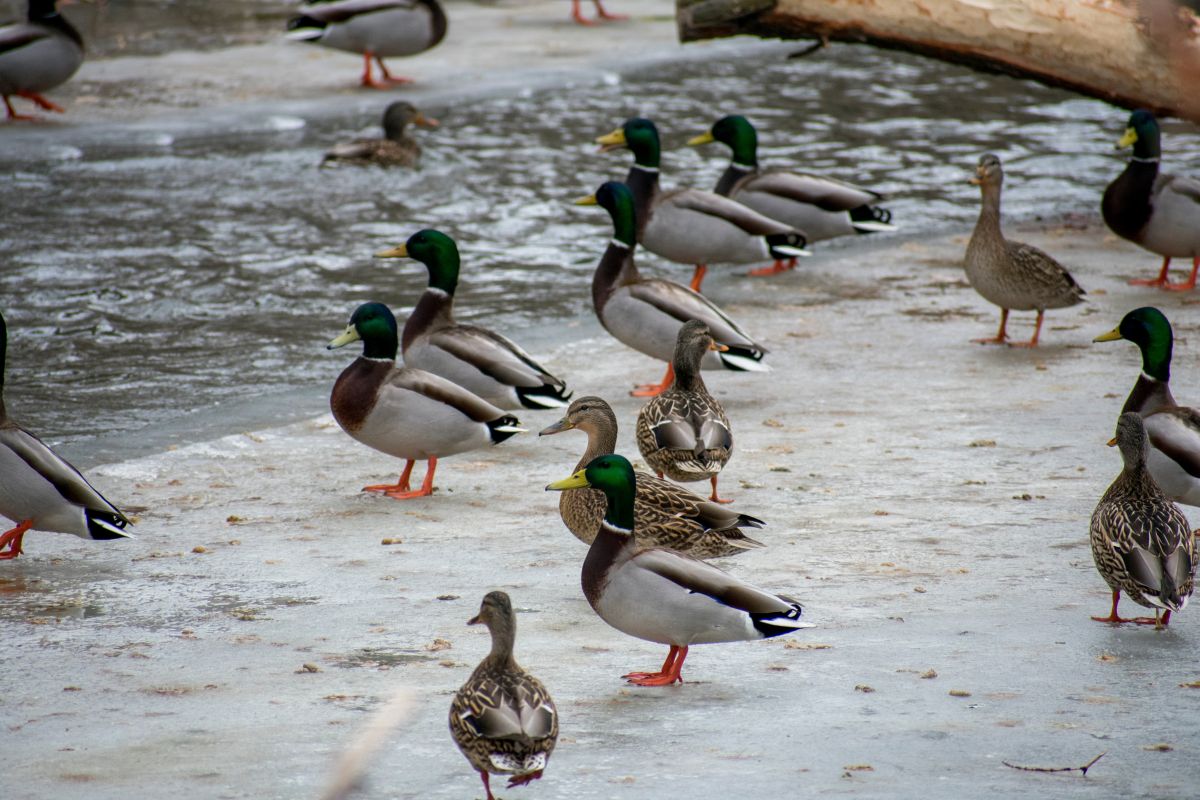Leveraging Weather Fronts for Waterfowl

Leveraging Weather Fronts for Waterfowl
I’ll never forget the time in my twenties when I got to witness a true migration push led by the onset of a nasty weather system. It was late November, and the temps had dropped to near freezing. A northeast wind was firing up, bringing precipitation and sub-freezing temps. The plan was to scout around and find a field to set up for mallards and geese the following morning. We found a few groups of ducks working a cut corn field but nothing in any substantial numbers. The roost lake nearby was holding maybe a hundred ducks of mixed variety, enough to say let’s set up in the morning in an adjacent field and give it a whirl.
We woke up at 4:30 am to find a fresh blanket of snow nearly 3” deep, and it was still coming down. Couple that with a pretty stout wind and the morale was less than eager to venture into the blowing snow, not knowing if the ducks would even fly. We sipped coffee and slowly pep talked each other into having confidence and struck out for the field.
The going was slow; I’m talking 35 mph tops on the highway due to the poor visibility and the fact the plows hadn’t hit that stretch yet. We got to the field about 30 mins before sunrise and just blindly decided on a spot. As we put out about five dozen goose full bodies and a dozen full body mallards right on the edge of the pocket in front of our blinds. We were using layout blinds, a couple with snow covers and nestled right in amongst the tightly grouped goose decoys.
Sunrise came and went, and we collectively took turns walking around to bump the decoys to knock snow off of them. Around 8 am, something in the weather changed. The wind almost stopped, and the snow lightly fell. You could hear the light hiss of snow hitting the ground. A few moments later the telltale whistle of wings could be heard overhead despite not being able to see them. On of my hunting partners gave a couple soft quacks on the call and more whistling. They were trying to pinpoint our location.
Out of the gloom, wings locked, a flock of about fifty mallards appeared and surprised us all with how close they were. Ducks began landing all around us as if putting all caution away in efforts to find food. About half of the flock stayed in flight and made a tight circle, centering back up on our decoys no more than ten feet off of the ground. They got within fifteen yards and the words we all love to hear, “take em”, rang out. Flock after flock did the same thing and in about thirty minutes, we had a four-man limit of drake mallards, two wigeon and a pintail.
I still get goosebumps thinking back on that hunt, the hens quacking back to our calls overhead and flocks just appearing out of the snow. This is one of many weather front hunts I have been fortunate to partake in with great success and, like many of you, still get excited when I see a big weather front on the forecast during waterfowl season.
Cold Fronts
The most greatly anticipated weather front for waterfowlers is of course a cold front. As my story outlined, this brings colder temps, strong winds and sometimes precipitation. Naturally, you will get ducks every year that migrate based on calendar periods, but a good cold front will also carry a lot of birds south, especially earlier in the season depending on how nasty it gets up north. Cold fronts also drive waterfowl to feed, and this can lower their guard a bit as food and water becomes a greater focus. When the weather really hits, ducks and geese may trade back and forth throughout the day from roost to a food source, trying to replenish their energy. Rain on the other hand can keep birds grounded until the system lets up so pay close attention to the radar and take advantage.
I like to be extra visible to the birds, especially when dealing with snow and this means more decoys. Just be very careful if you are hunting with a boat and the extra weight of decoys and potentially ice. Waterfowl during these events tend to group up closely for warmth, safety and feeding efficiency and it pays to have your spread look as such. The closer the decoys, the smaller the overall spread footprint gets so having more decoys helps to increase visibility.
The best times to target a cold front are the day before, the day of and the day after. This can sometimes make hunting a challenge because you do not necessarily know where the birds are going to end up if they haven’t arrived already. Scouting obviously helps a lot, but I often found that just getting out and hunting can either be successful, or it tells me what I need to be doing differently. Whether that is moving to a different spot in the same area or packing up and searching for plan B. In wintry conditions when birds aren’t feeding, they want someplace as much out of the elements as possible to rest. This can be as simple as a backwater oxbow or reservoir arm surrounded by thick timber.
Warm Fronts
This is generally a situation that many hunters tend to sneer at. We all want those cold fall days to hunt but sometimes mother nature has other plans. Not all is lost, and in many cases, you will actually see less hunting pressure especially on public ground. The term “reverse migration” gets thrown into the mix on occasion when a warm front moves in. While this can be true for southern states, I really don’t think we see much of that here in Iowa. What more so happens is local pockets of waterfowl get what folks refer to as “stale” meaning they have been around for a bit, are wise to hunting pressure and often only moving at certain times of the day without the sheer drive for food from freezing weather.
This is where you really need to put in the time scouting and find those isolated groups of birds and hunt them where they want to be. I can’t stress this enough, hunt them where they want to be! I’m not an advocate of hunting a roost most of the time, but this can be a situation where that may be your only chance for success, especially if taking kids along for the hunt. I’ve hunted mallards on a reservoir along steep cliffs using thirty-foot decoys lines before and hiding amongst the boulders at the bottom of the cliff because that’s where the ducks wanted to be at that given time. A little extra work and thinking outside of the box can make a huge difference.
Another phenomenon that can occur and most folks don’t think about is a south wind stalling out a migration. When this happens, you may have a cold front from way up north pushing waterfowl south, and a converging front from the south crashing against it. This can and does happen in Iowa. Waterfowl species are able to cover vast distances when they migrate and its not uncommon for birds leaving the north to fly right through the Midwest and end up in their southern destination. A south wind or a colliding front can sometimes stall their progress, forcing them to make a stop. This can occur anywhere around the state but is more often observed in the big migration corridors like the Mississippi or Missouri rivers.
Plenty of those reading can relate, and as I get older, I do not have the luxury to hunt as much as I used to. Many are the weekends where a seat in the duck blind has been traded in for a seat on the bleachers at football games or other youth sporting events. When afforded the chance to venture out I really pay attention to the weather and try my best to scout ahead of time.
When I see a big front building in the forecast, I might even bargain with the wife for a chance to capitalize on it. Experience over the years has taught me many things and one of those certainly is that waterfowl can be unpredictable. It pays to stack the odds in your favor and pitting a weather front against the nature of waterfowl is one major tool we hunters can utilize. Have a great, safe season in the field.
By: Nick Johnson
November 2025
Here are some great ideas for scent control in the field
Or if you are looking for the digital version of this months issue here it is below
Looking for the Cattle/Dairy side of things

